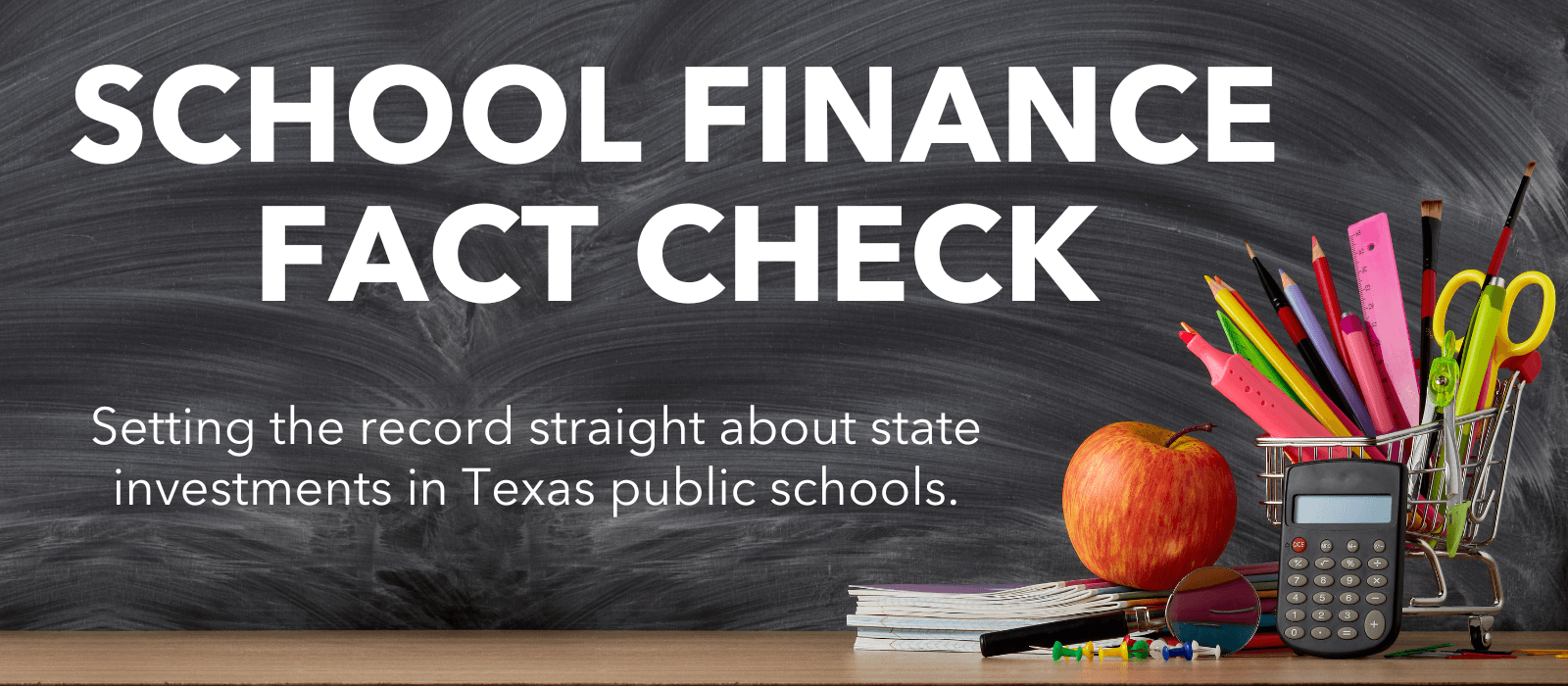
CLAIM:
THE LEGISLATURE AUTHORIZED A RECORD-BREAKING INCREASE IN STATE GENERAL REVENUE FOR PUBLIC EDUCATION IN THE 2023 REGULAR SESSION.
Reality: The overall funding increase touted by legislative leaders includes $18 billion in a swap of state revenue for local tax revenue; this is not new revenue, but rather just a change in the source of the revenue. It also counts the restoration of some funding cuts that were made two years earlier, and it includes additional money for retired teachers’ health insurance, which does not impact current classrooms. The Legislature also provided additional funding for current teachers’ health insurance, but even with that increase, premiums are increasing for active teachers. More than $3 billion is for the cost of the growing overall enrollment in Texas schools; it does not impact per-pupil funding.
$18 BILLION: Amount that the state is spending to reduce property taxes. Those are not new dollars for schools.
CLAIM: STATE REVENUE, RATHER THAN LOCAL PROPERTY TAXES, NOW FUNDS MORE THAN HALF THE COST OF FUNDING PUBLIC EDUCATION IN TEXAS.
Reality: The calculation used to fuel the claim that the state is covering more than half the cost of education counts billions of dollars paid in recapture as state dollars. However, those are not state dollars. They are local property-tax dollars that the state has removed from school districts.
46.6%: Amount of the cost of education funded by state revenue, rather than local property taxes.
CLAIM: STATE REVENUE FOR PUBLIC SCHOOLS IS LIMITED BECAUSE THE LEGISLATURE MUST HOLD BACK $4.8 BILLION TO PAY FOR THE SUPPLEMENTAL BUDGET BILL IN THE NEXT SESSION. FOR EXAMPLE, THE STATE WILL NEED ADDITIONAL FUNDING TO PAY FOR HIGHER-THAN- PROJECTED MEDICAID COSTS.
Reality: The state regularly spends less money than appropriated in the two-year budget. These savings can be used in 2025 to pay for Medicaid if needed. While it is unclear what the demands on the Medicaid program will be in 2025, it is clear now that public schools need additional resources to hire and retain the educators they need.
$5 BILLION: Amount that Texas has spent less than appropriated in the past two budget cycles.
CLAIM: EDUCATION SPENDING HAS KEPT UP WITH INFLATION.
Reality: This claim is only true if you count federal funding, which was provided to help schools deal with learning loss resulting from the pandemic on a temporary basis, with funding expiring in the 2023-24 school year. Those dollars cannot be used for ongoing school operations and teacher salaries. The core unit of state education funding in Texas is the Basic Allotment, which the Legislature has not increased since 2019. The rate of inflation since that increase has been 19 percent.
